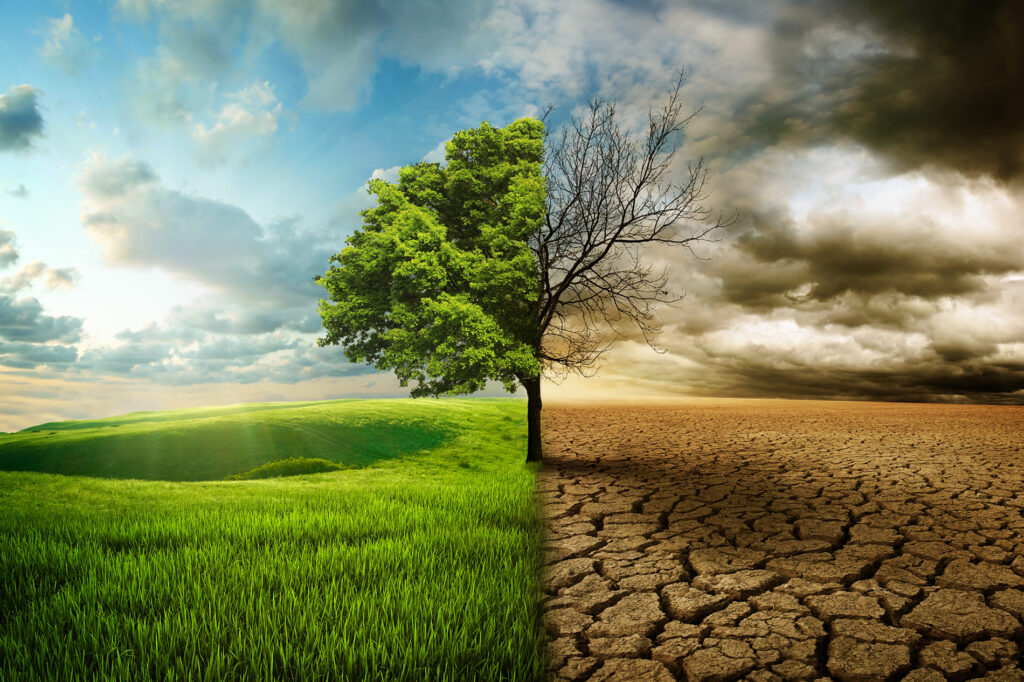Climate change is a complex issue that has been debated for decades. Some people believe that climate change is a hoax and that scientists have falsified data to support their claims. However, the overwhelming majority of climate scientists agree that climate change is real and caused by human activity.

What is Climate Change?
Climate change is a long-term change in the average weather patterns that have come to define Earth’s local, regional, and global climates. This change is mainly attributed to human activity, such as the burning of fossil fuels, deforestation, and industrial processes. These activities lead to the emission of greenhouse gases, such as carbon dioxide, which trap heat in the atmosphere and cause global temperatures to rise.
Hoax or Reality?
The idea that climate change is a hoax has been perpetuated by a small minority of individuals who do not accept the scientific consensus on the matter. These individuals argue that the data used to support climate change has been falsified and that climate change is just a natural occurrence.
However, the evidence overwhelmingly supports the existence of climate change, and the role that human activity has played in causing it. Climate scientists have been studying the Earth’s climate for decades and have compiled vast amounts of data and evidence to support their claims.
One of the most significant pieces of evidence comes from the measurement of carbon dioxide levels in the atmosphere. These levels have been steadily increasing since the industrial revolution, and they now stand at their highest levels in millions of years. This increase in carbon dioxide levels corresponds directly with the increase in global temperatures over the same period.
The Effects of Climate Change
The effects of climate change are already being felt around the world, with more extreme weather events, rising sea levels, and changing weather patterns. These effects have the potential to cause devastating consequences, including increased flooding, droughts, and wildfires. Additionally, the warming of the oceans can lead to coral bleaching and a reduction in the amount of oxygen in the ocean, which can have severe impacts on marine life.
What can be Done?
Climate change is a global problem that requires global solutions. Reducing greenhouse gas emissions is the most critical step that we can take to combat climate change. This can be done through various measures, such as investing in renewable energy sources, promoting energy efficiency, and reducing carbon emissions from transportation.
Individuals can also take steps to reduce their carbon footprint, such as using public transportation, eating a plant-based diet, and reducing energy consumption. Governments can also take action by implementing policies to promote sustainable development, such as incentives for businesses to use renewable energy sources and regulations to reduce emissions from industries.
Causes of Global Warming
Natural Causes of Global Warming
Solar Radiation
Solar radiation is the primary source of energy for the Earth’s climate system. Variations in the intensity of solar radiation can influence global temperatures. However, changes in solar radiation are not a major driver of global warming, as they are relatively small compared to the effect of greenhouse gas emissions.
Volcanic Activity
Volcanic eruptions release large amounts of gases and particles into the atmosphere, which can temporarily cool the Earth’s surface. However, the cooling effect is relatively short-lived, and volcanic activity is not a significant cause of global warming.
Human Causes of Global Warming
Fossil Fuels
The burning of fossil fuels, such as coal, oil, and gas, is the primary source of greenhouse gas emissions. These emissions are the result of human activities, such as electricity generation, transportation, and industrial processes. Carbon dioxide (CO2) is the most significant greenhouse gas emitted from fossil fuel combustion, accounting for around 80% of all greenhouse gas emissions.
Deforestation and Land-Use Changes
Deforestation and other land-use changes also contribute to global warming. Trees absorb CO2 as part of the process of photosynthesis. When trees are cut down, the stored carbon is released back into the atmosphere. In addition, deforestation reduces the capacity of forests to absorb CO2 and provides fewer trees to absorb and store the greenhouse gas.
Agriculture and Livestock
Agricultural activities, such as the use of fertilizers and the management of livestock, also contribute to global warming. Nitrous oxide (N2O), a potent greenhouse gas, is released through the use of fertilizers, while methane (CH4), another potent greenhouse gas, is released through the digestive processes of livestock.
Anthropogenic vs. Natural Causes of Global Warming
While natural factors can influence global temperatures, the current warming trend is primarily caused by human activities. This is supported by multiple lines of evidence, including the observed increase in greenhouse gas concentrations, the correlation between greenhouse gas emissions and temperature changes, and the ability of computer models to reproduce observed temperature trends when only human factors are considered.
Global warming has both natural and human causes. While natural factors, such as solar radiation and volcanic activity, can influence global temperatures, the current warming trend is primarily caused by human activities, particularly the burning of fossil fuels, deforestation and other land-use changes, and agricultural activities. Understanding the causes of global warming is essential for developing effective strategies to mitigate and adapt to its impacts.